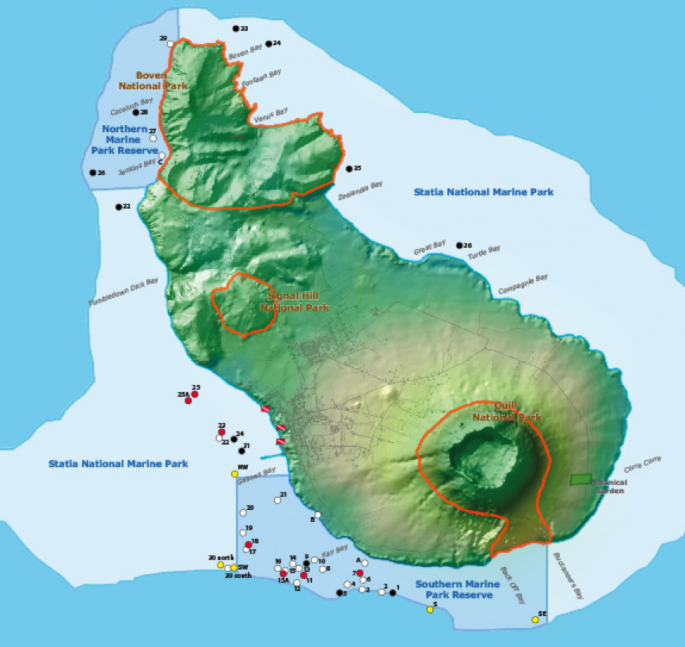Since 2002, STENAPA has been monitoring the sea turtles that visit the shores of St Eustatius and its Marine Park. Nightly patrols help us spot turtle tracks (although hawksbills will challenge rocky shores to find their nests, leaving few tracks). Information in-line with WIDECAST protocol is recorded and the nest hidden to avoid being tampered with. 40 – 60 days later, depending on the species, additional data is collected when the hatchlings emerge. Overtime, the data becomes a story and it tells us the trend in reproductive success, likely their gender and much more.
Protecting turtle nesting beaches has also been an ongoing, annual activity as garbage on the beaches is removed so they do not hinder either the mother or the hatchlings on their journey. Removing the pollution also prevents it from washing out to sea and causing even more problems. Sargassum washed ashore has been a growing threat to nesting beaches globally, but especially in the Caribbean. The Reforestation Project and Made in Statia Agriculture Centre remove as much of the sargassum as possible for fertilizer and mulch here on Statia.
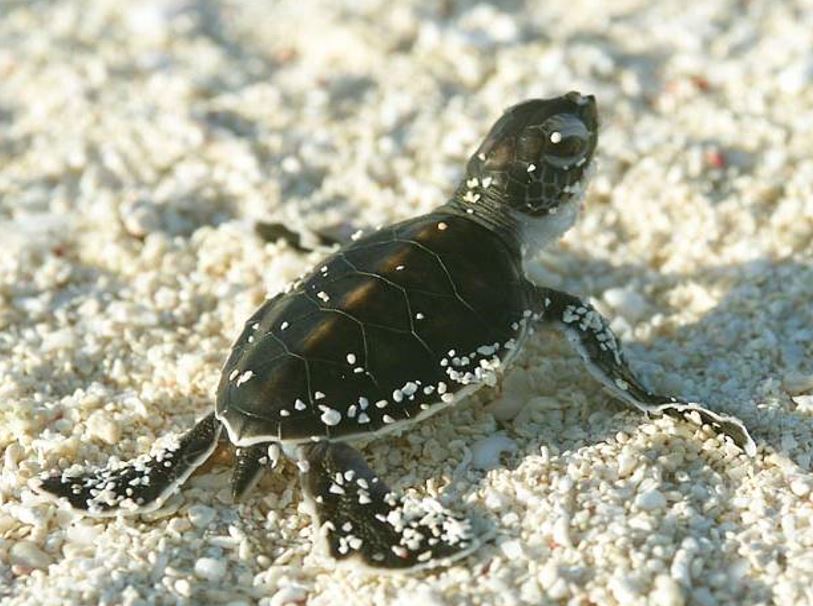
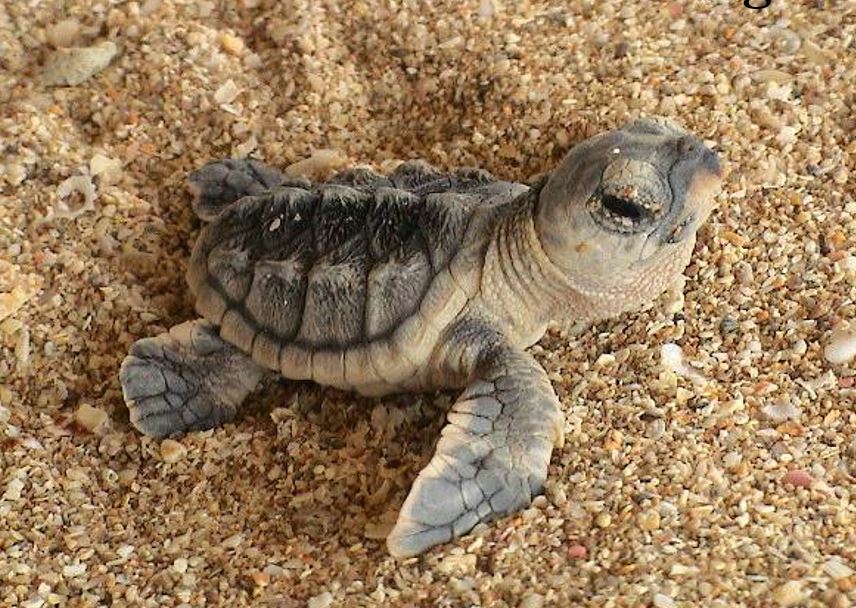
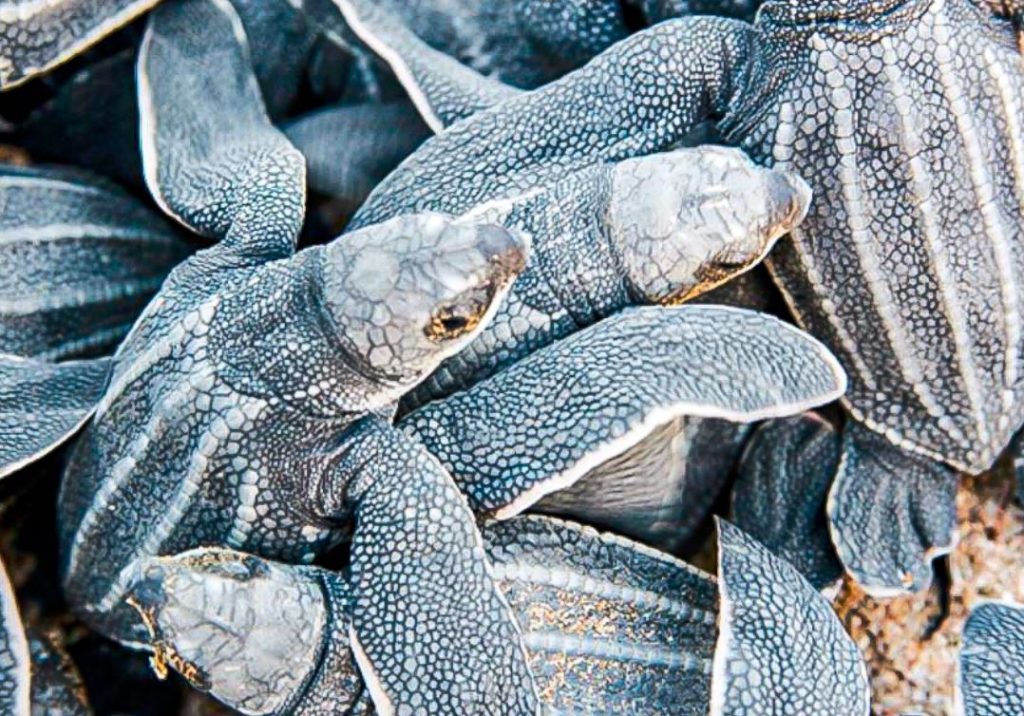
Understanding our turtles below the waves
Marine Park rangers, along with interns and volunteers, conduct annual in-water surveys of juvenile and adult turtles as they forage for food and resting spots. The surveys (30 in total) are throughout the entire Marine Park around Statia. During each survey, 2 scuba divers swim 10 meters apart recording the turtles they see for 40 minutes.
For each turtle observed, they note the following:
- *Species and gender
- *Approximate size, activity when spotted (eating, resting, etc) and
- *Where they were found (over sand, reef, seagrass or wreck).
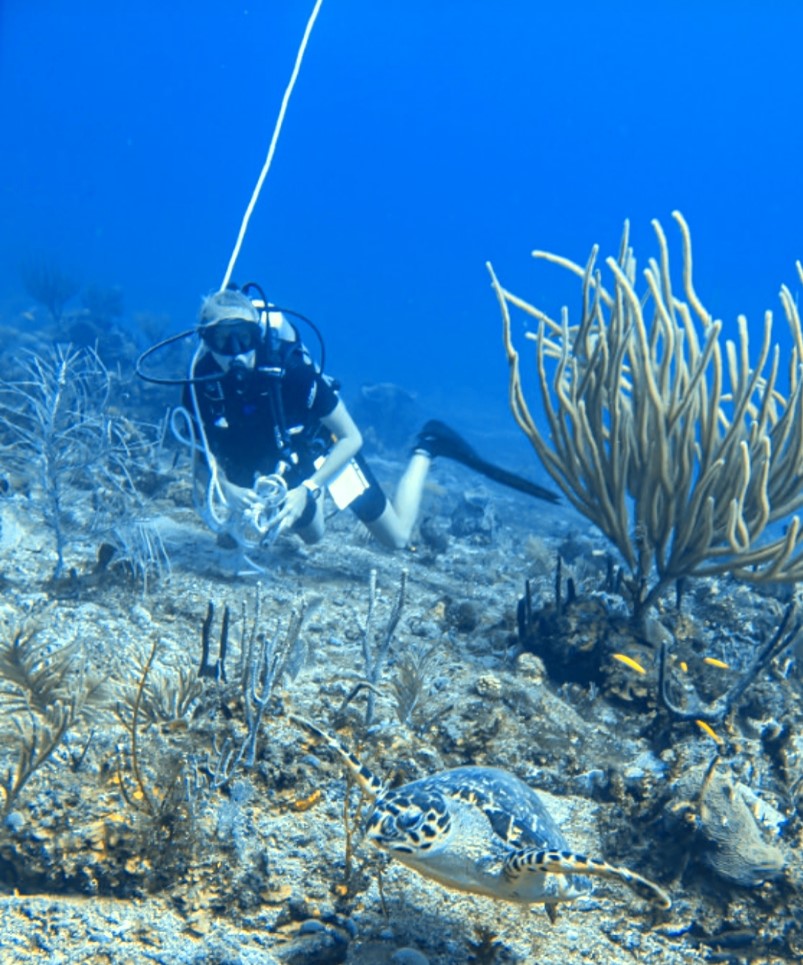
Can you identify this sea turtle?
Monitoring
“STENAPA monitors the beaches, both morning and night, to identify new nests and track hatching success. The details and information from these beach patrols are collected by filling in data sheets. Those data sheets can be used internationally for the purpose of having comparable data. Annemieke Borsch and Louise Kramár, two students from Van Hall Larenstein University, recently produced protocols as part of an explanatory report in cooperation and guidance from STENAPA. These protocols cover morning patrol, night patrol and next excavation while the whole report can be used as a guide for how to perform certain tasks in a correct, safe and careful way during patrols.” Read more HERE.
Long term monitoring of any species provides us with:
- *Baseline information – to know what things were like before any new factor comes into play. For example, before and after Covid-19 or plastic pollution
- *Trends – to see if the population is growing or declining
- *Early detection – to know if a disease or parasite is in the population
- *Behaviour data – helps us know and protect their food source, habitat and breeding grounds
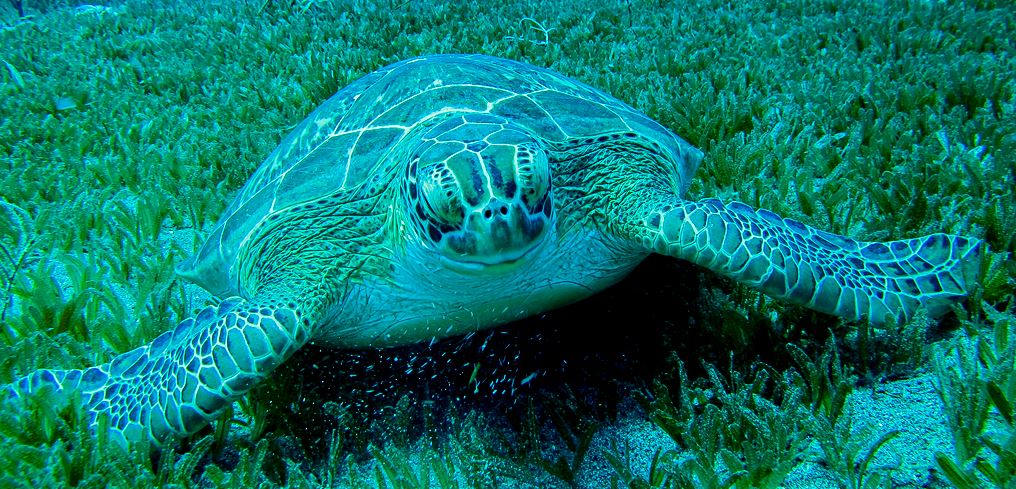
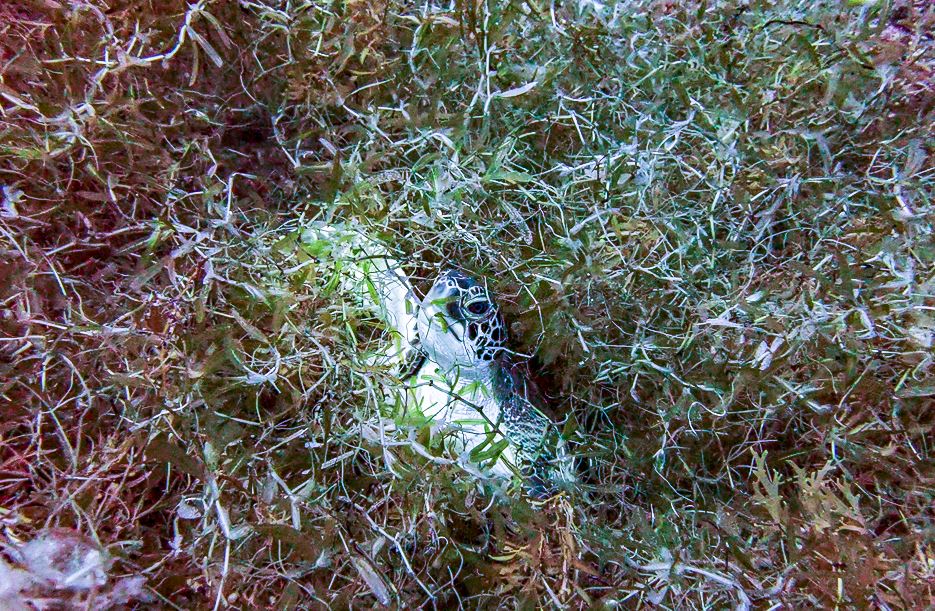
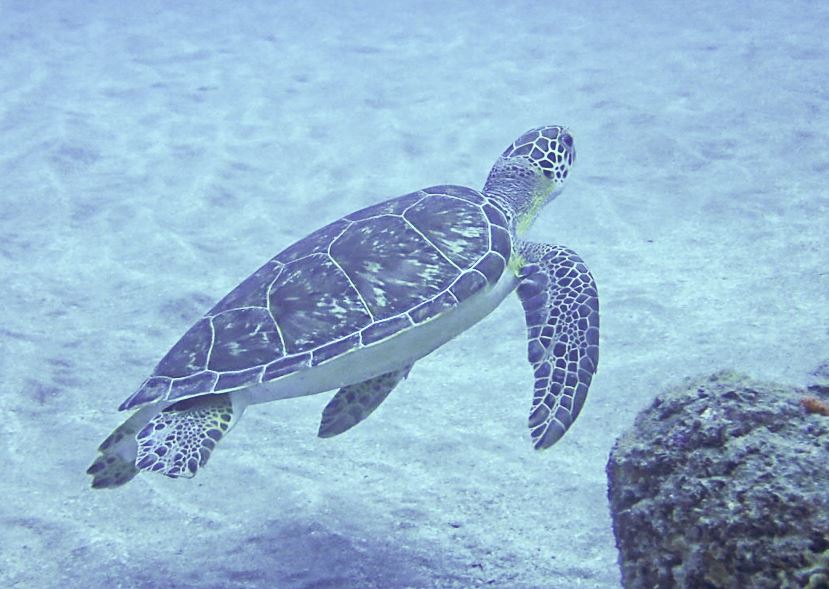
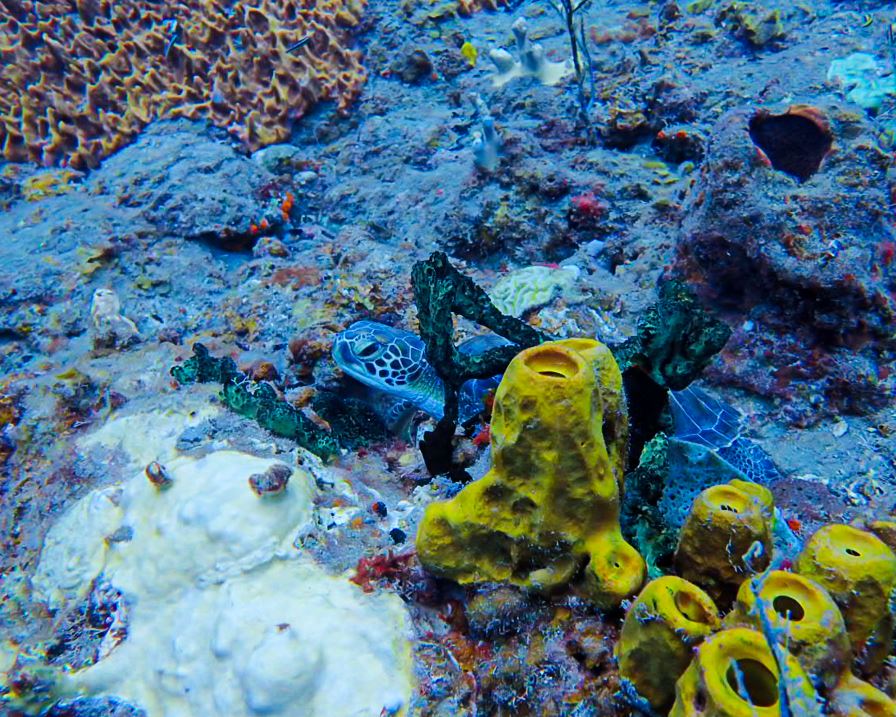
We go further
- *We aid injured turtles, for example, if they are caught in fishing nets or by a hook.
- *Swells, storm surges, cliff-falls and heavy rainfall can alter the shape and extent of turtle beaches, subsequently endangering nests. When possible, these endangered nests are safely moved to a secure location.
- *Beach mapping is done several times a year. This keeps track of and understand how the beaches change over time. This helps us predict possible nesting areas and determine which locations are indeed safe.
- *Involving the community is crucial in protecting the endangered sea turtles, as we co-exist in their native range. Understanding how we impact the populations allows us humans to mitigate our actions. This can produce a win-win scenario for both humans and turtles. An upcoming campaign aims to do just that.
Future Plans
*We once used satellite tracking to record the migration of a green sea turtles, one of which was called Shellie. A GPS device that is humanely secured to the shell of the turtle shows where these creates travel throughout the region to forage and so on. Such research is heavily dependent on funds to pay for satellite time and equipment.
*Climate change via global warming is heating our beaches. Way before sea level rise becomes apparent, our turtles are being affected. There is a saying, ‘Cool Dudes, Hot Chicks’. Variation in temperature on beaches allows for variation in gender of the sea turtle populations. With all beaches heating up, the chances of male turtles being produced is diminishing. This means the chances of a successful mating pair meeting is also diminishing. We will be carrying out more sand shading operations to lower the temperature of the sand.
Help us help sea turtles
Your donations, whether in cash or kind, to sea turtle conservation are greatly appreciated. The sea turtles that visit our shores thank you.
We take this opportunity to thank WIDECAST and Diergaarde Blijdorp for funding and otherwise assisting our turtle program.




